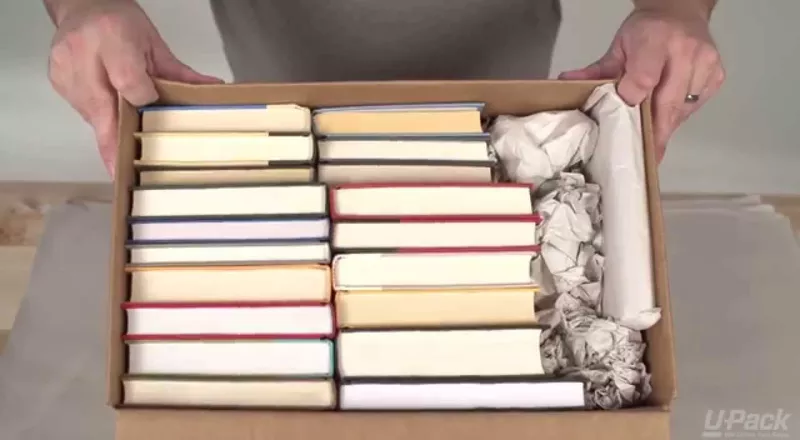By continuing to use this site, you agree to our use of cookies.
How to Move Books
Apr 10, 2024
Protecting your book collection while moving
If books hold a special place in your heart, you’re not alone. Whether you’re a bookworm, a casual reader, a collector or somewhere in between, stories can take readers on a journey without leaving home. But if you are leaving one home for another, protecting your favorite reads during the move is essential for setting up a personal library in the new place.
No matter how many volumes you have in your collection, U-Pack moving experts have tips to keep your books (and your back!) in good shape while you move.

How to pack books for moving
Before starting, make sure to have the right supplies on hand to protect your favorite books:
- Marker (for labeling)
- Packing paper (get acid-free paper for old or rare books)
- Packing tape
- Sturdy boxes (small or medium)
Step 1: Prepare boxes
Reinforce the bottoms of small or medium boxes with at least two layers of packing tape. Line the boxes with crushed packing paper to cushion the contents.
It’s important to use sturdy boxes that can hold the weight of heavy books, and you’ll want to avoid large boxes that can become too heavy to move when fully loaded. Always use caution when lifting moving boxes. Your back will thank you later!
Step 2: Sort and declutter the collection
Organize by size and type (paperback and hardcover) for easier packing. Set aside any old or rare works for separate handling.
It’s also a good time to get rid of anything you don’t wish to move. Sell unwanted books online or in a moving sale, or consider donating them. Places like Goodwill, hospitals, libraries and nursing homes often take gently used reading material. Check to see what options are available in your area.
Step 3. Pack the books
Here are some different methods to follow:
Load upright
Place the first row with the pages facing the outside of the box (like you would place them on a shelf). The next row should be arranged spine to spine. If there’s room for a third row, use a layer of packing paper to keep pages from touching. This method works well for hardcovers.
Lay flat
Recommended for paperbacks. Stack same-sized books flat and place packing paper between columns to prevent the pages from touching.
Place spine down
Place books in the box with the pages upright, then add packing paper to keep them secure. This helps prevent spine damage in large or heavy volumes.
Protect old books
Rare or antique editions should be wrapped individually in acid-free paper and carefully packed. It’s best to keep these items with you in a climate-controlled environment.
Step 4: Secure and label the packages
Fill in any extra space with crushed packing paper to keep the contents from shifting during transit. Close the box flaps and gently shake the package to ensure you have enough padding. If things move inside the box, reopen it and add more packing materials.
Once the box is filled correctly, tape it closed with two layers of tape for extra protection. Lift the box slowly to make sure the taped seams are secure, and add more tape if needed.
Label each box and indicate the correct side up to make loading and unloading easier.
See the steps in action here:
Let U-Pack handle your move, books and all
If you’re still planning your long-distance move, U-Pack can help! We’re a self-moving service that allows you to travel with your family while we take care of transporting your things.
Get a free, no-obligation quote online or call 844-362-5303844-594-3077 to speak to one of our helpful moving consultants.
If you have questions about packing your things or how U-Pack works, let us know in the comments. We’re always happy to help!
More articles you might like...




